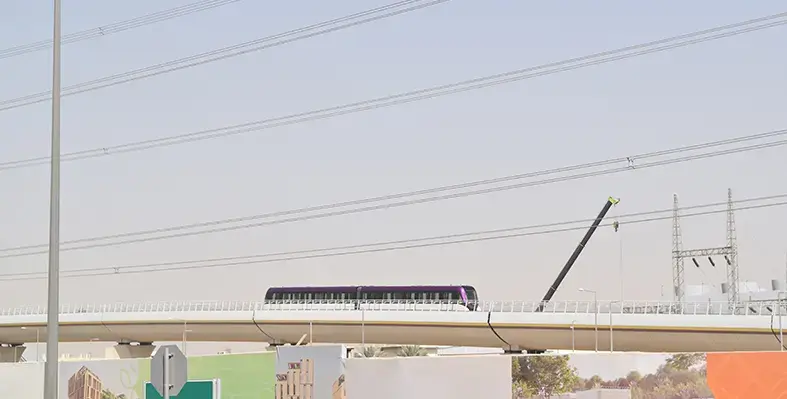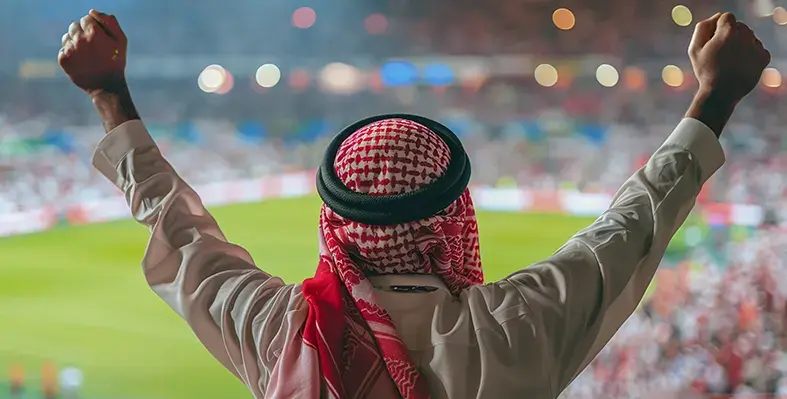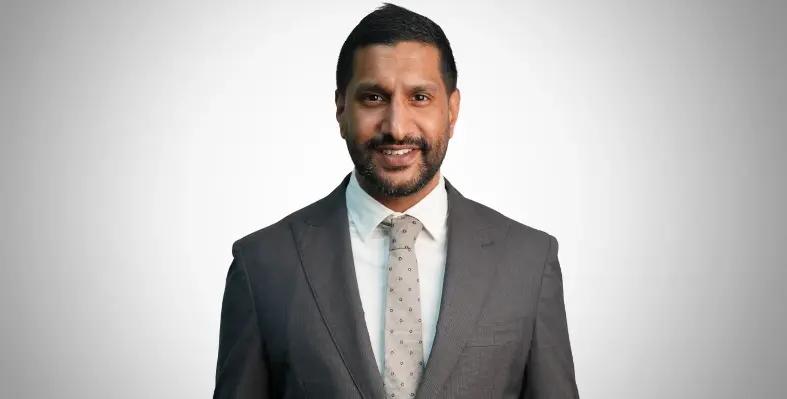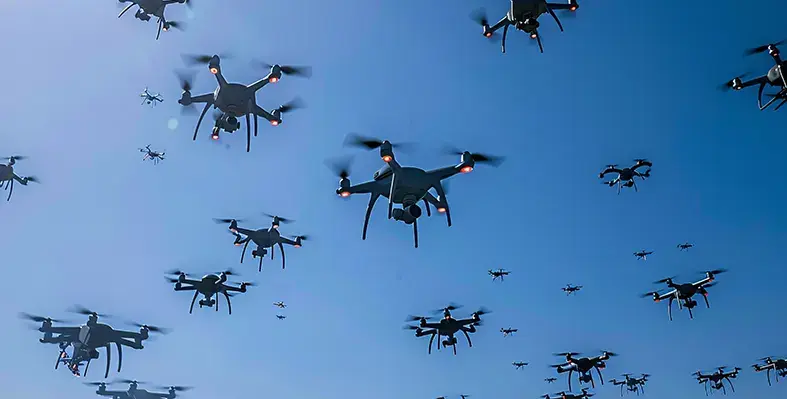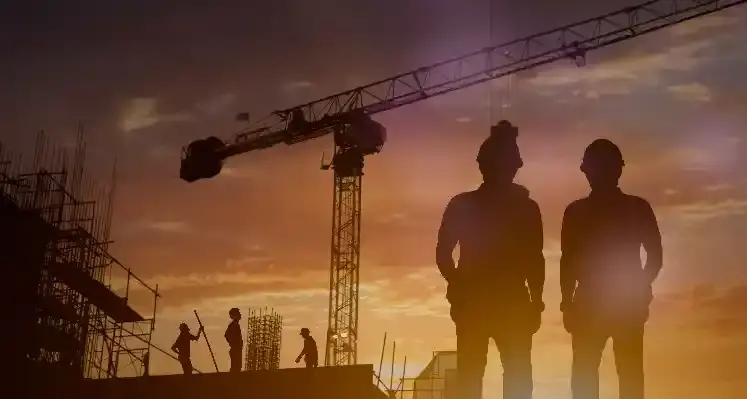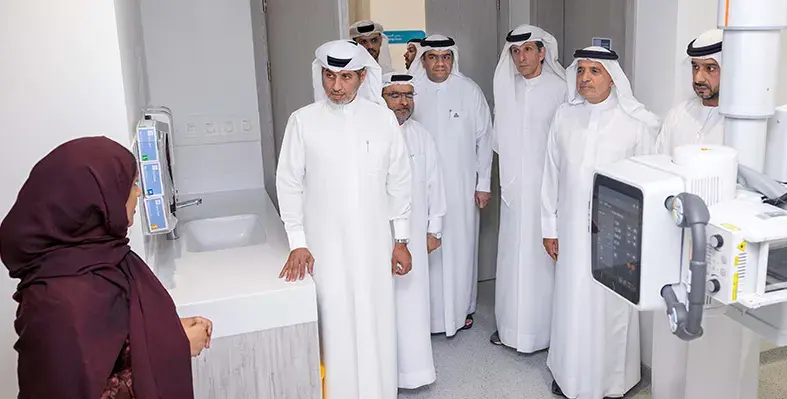Middle East
Middle East
- Topic: HSE
- Region: Middle East
- Date: 5 December 2025
- Year: 2025
Saudi Arabia has introduced the Regulation on Occupational Fitness and Non-Communicable Diseases Examinations, designed to enhance workplace health and safety throughout the Kingdom
The regulation provides a comprehensive framework to enable early detection of non-communicable diseases, enhance workers’ health in workplaces, assess mental and physical fitness, reduce occupational diseases and injuries, and ensure the suiable selection of candidates for sensitive professions. It also seeks to strengthen workplace prevention measures and improve worker wellbeing, thereby improving productivity.
The regulation requires employers to implement mandatory pre-employment medical examinations and periodic check-ups for employees, with special provisions for workers in hazardous or high-risk professions.
It also requires employers to classify roles by risk profile, ensuring that assessments align with actual workplace exposures. This includes tests such as respiratory fit testing, audiometry and spirometry.
In addition, the regulation establishes comprehensive health databases to track the health of all employees, supporting decision-making and enhancing preventive oversight.
The regulation applies to public entities, private sector establishments and non-profit organisations – covering employees of all contract types, including remote workers, trainees and persons with disabilities.
“The new Occupational Fitness & Non-communicable Diseases Examinations Regulation marks a major step forward in Saudi Arabia’s occupational health and safety landscape,” comments law firm Dentons.
“By standardising medical examinations, embedding risk-based approaches and strengthening data protections, the Regulation enhances both worker well-being and organisational resilience.
“For employers, compliance will require investment in systems, training and governance – but the payoff is clear: a healthier, safer and more productive workforce that is aligned with the Kingdom’s long-term economic transformation objectives.”
- Topic: HSE
- Region: Middle East
- Date: 4 December 2025
- Year: 2025
At the inauguration of the new Jordan Oil Terminals Company's laboratory, a facility that will provide testing and quality assurance services for petrochemicals, Jordan's Energy Minister Saleh Kharabsheh praised the facility's world-leading safety and quality standards
Kharabsheh also highlighted the new facility's alignment with Jordan's Economic Modernisation Vision, which hopes to enhance the efficiency and safety of key sectors, of which energy reigns large.
Jordan Oil Terminals Company's new facility was reported to employ accredited analytics and embody the highest global standards in the safety and quality of its operations, according to media reports.
Energy Minister Kharabsheh was joined by public and private sector officials and business representatives, as well as ministers from across industrial sectors, at the inauguration. The union of public and private sector was addressed by the Minister, who iterated the importance of partnerships in sustainable development and industry competitiveness.
Ashraf Rawashded, Jordan Oil Terminals Company's general director, suggested the opening of the laboratory will be reflected on as a key milestone for his company, highlighting the key role the oil and gas sector will play in its ongoing operational footprint expansion.
- Topic: HSE
- Region: Middle East
- Date: 3 December 2025
- Year: 2025
Aluminium Bahrain (Alba) has won the ‘Excellence in Safety’ Award from the Lifting Equipment Engineers Association (LEEA), the latest in a string of health and safety awards
The award recognises Alba’s outstanding achievements in workplace safety, including reducing total injuries by nearly 60% over the past five years, fostering a bottom-up approach that ensures active employee engagement in safety initiatives, and maintaining the highest standards in safe lifting operations through continuous training and certification of its staff as lifting tackle inspectors.
Ali Al Baqali, Alba’s chief executive officer, said, “Winning this award from a globally respected body like LEEA is a reflection of Alba’s relentless pursuit of safety as a core value. This recognition inspires us to keep empowering our workforce and fostering a culture where safety leads every decision.”
With over 80 years since its establishment in London, UK, LEEA is a globally recognised authority in the lifting industry and related practices, collaborating with cross-sector members to advance safety standards and set benchmarks for excellence.
Alba’s strong commitment to safety is reflected in a number of safety achievements this year, including the milestone of 40 million safe working hours without a Lost Time Injury (LTI), reached on 06 October 2025, reinforcing its position as a global leader in industrial safety.
“Reaching 40 million safe working hours is more than a milestone, it’s a reflection of our strong safety culture, the commitment of our people, and the strong collaboration between our employees and contractor personnel,” said Al Baqali during a celebration attended by senior officials and employees at the company’s premises.
“This success is a direct result of our workers’ dedication, discipline, and resilience. Working safely under the demanding conditions of aluminium smelting requires focus and teamwork and our people have consistently delivered.”
The company’s commitment to cultivating a world-class safety culture for its workforce has been recognised this year with the award of the Royal Society for the Prevention of Accidents (RoSPA’s) President’s award for the third consecutive year, British Safety Council 2025 International Safety Award and several major awards from the USA’s National Safety Council (NSC).
Alba prioritises worker safety into every layer of its operations, believing that its people are its most valuable assets, and investing in their safety is an investment in the company’s future success. Its foundational ‘Safety First’ culture is strengthened by dedicated safety campaigns, comprehensive in-house training programmes, weekly Safety Talks and active shop-floor engagement by Alba’s executives, all of which play a crucial role in promoting a safer workplace for all.
- Topic: Industrial
- Region: Middle East
- Date: 2 December 2025
- Year: 2025
Dubai has tightened up regulations relating to the trading, manufacture, supply, storage and transport of petroleum products, in line with global best practices
The resolution was issued by His Highness Sheikh Hamdan bin Mohammed bin Rashid Al Maktoum, Crown Prince of Dubai, Deputy Prime Minister and Minister of Defence, in his capacity as Chairman of The Executive Council of Dubai, in a bid to curb illegal trading, mitigate environmental impact, and safeguard lives, property, and public safety.
Provisions of the resolution apply to all entities engaged in these activities across Dubai, except for companies exempted by a UAE Cabinet decision.
The Dubai Supreme Council of Energy is now responsible for overseeing petroleum trading activities in the emirate. Its duties include setting rules on competition and market concentration, approving technical standards and procedures for trading, storage, transport, sale, and use of petroleum, and ensuring compliance with health, safety, and environmental requirements.
The Council also issues, renews, and amends permits, determines the number and locations of fuel stations, approves standards for transport vehicles, storage facilities, and household gas cylinders, and identifies areas within the emirate where the trading of petroleum products is prohibited, in coordination with the relevant authorities.
The resolution prohibits any person from engaging in petroleum trading activities in the emirate without authorisation from the licensing authority. Such activities may only be carried out after the source of the petroleum materials has been verified and documentation confirming acquisition from a Council-approved company has been submitted.
According to the resolution, violations of petroleum trading rules incur fines up to a maximum of one million dirhams.
The Supreme Council of Energy has the power to cancel permits, temporarily close facilities for up to six months, revoke commercial licences, and seize, destroy, or re-export petroleum materials and vehicles that do not comply with the rules.
- Topic: HSE
- Region: Middle East
- Date: 1st December 2025
- Year: 2025
- Topic: HSE
- Region: Middle East
- Date: 1st December 2025
- Year: 2025
- Topic: HSE
- Region: Middle East
- Date: December 1, 2025
- Year: 2025
The memorandum of understanding, signed by H.E. Khalfan Abdullah Al Mansoori, Acting Director General of the Abu Dhabi Hazardous Materials Management Centre, and H.E. Dr. Tariq Ahmed Al Ameri, Acting Director General of the Abu Dhabi Agriculture and Food Safety Authority (ADAFSA), will hope to establish a framework for best practices in hazardous material handling and management
Both organisations will contribute to the comprehensive framework, which will include joint initiatives, streamlined regulation, and technical data and information exchange.
ADAFSA acting general director, H.E. Dr. Tariq Ahmed Al Ameri, said shortly after signing the MoU, "Through this partnership, we will work to develop integrated systems for hazardous materials management, streamline regulatory procedures, and provide a safe environment for farmers, livestock breeders and producers.
"This will contribute to improving operational efficiency, enhancing the quality of agricultural and food production, and strengthening its competitiveness in the markets."
Several strategic initatives are expected to follow the MoU; potential avenues include joint research, digital transformation projects, and environmental schemes. It follows the establishment of the Abu Dhabi Hazardous Materials Management Centre in 2023, and its more recent strategic pivot.
H.E. Khalfan Abdullah Al Mansoori, Acting Director General of the Abu Dhabi Hazardous Materials Management Centre, concluded, "The signing of this MoU represents a strategic step that strengthens Abu Dhabi’s efforts to build an integrated system for hazardous materials management... managing the circulation of these materials in accordance with international standards reduces operational risks and enables investment institutions to operate within a stable and reliable regulatory environment, supporting Abu Dhabi’s competitiveness and attracting more high-quality investments."
- Date: 26 November, 2025
- Year: 2025
Penta Global, a UAE-based EPC construction company, has released a new report titled Mind Matters in Construction: The State of Mental Health and Wellbeing in the UAE, highlighting the need for a more coordinated and standardised approach to worker wellbeing across the industry.
The construction sector contributes more than 9% of the UAE’s GDP and employs over 1.8mn workers, most of whom are expatriates. Despite its scale, Penta Global’s report finds that mental health remains an underaddressed area of worker welfare, even as awareness and initiatives continue to grow.
The report notes that untreated mental illness leads to at least 37.5mn lost productive days annually across the GCC, amounting to US$3.5bn in economic losses. It also references research showing that construction workers who work beyond eight-hour shifts are 2.7 times more likely to report symptoms of depression.
Sujay Nair, Executive Director at Penta Global, said: “This report takes an in-depth look at the mental health realities of the construction workforce. There is a clear growing recognition of employee mental wellness as a strategic priority in the UAE and globally. It highlights the progress made but also the need for change, shared accountability, and sustained attention to the wellbeing of the people building the UAE’s future. So, we are calling on the industry to come together and make the change together to foster a culture of care in construction.”
The study highlights uneven access to wellbeing programmes, with major contractors investing significantly in safety and mental health support, while smaller subcontractors often lack formal frameworks or dedicated budgets.
Government-led reforms, including the National Strategy for Wellbeing 2031, the 2024 Mental Health Law, and the Dubai Health Authority’s Mental Wealth Framework—are accelerating improvements. Abu Dhabi has reported a 30% rise in mental health treatment uptake since 2022.
Penta Global aims to shift the industry focus from awareness to action, urging the sector to increase wellbeing data and transparency, collaborate on unified standards, and prioritise prevention over reactive responses. By enhancing data, strengthening industry-wide collaboration, and addressing root causes of stress and fatigue, the UAE construction sector can set a global benchmark for sustainable and human-centric development.
- Topic: HSE
- Region: Middle East
- Date: 24 November 2025
- Year: 2025
ADNOC, Technology Innovation Institute (TII) and ASPIRE, have launched a pilot project to test and deploy coordinated drone fleets for rapid aerial disaster monitoring, in a move toward integrating autonomous systems into live emergency operations
Under the agreement, signed during Abu Dhabi Autonomous Week 2025, TII working in partnership with ADNOC and supported by ASPIRE, will pioneer a system that provides ADNOC’s Crisis Management Center with real-time aerial intelligence during emergency situations. The initiative integrates autonomous, long-range, and swarm-based drone operations into one unified framework.
Drones stationed at ADNOC sites will be able to take off and stream live video directly to headquarters. Wider monitoring and long-range incident response will be handled by long-range autonomous drones launched from ADNOC’s network of unmanned aerial vehicle (UAV) hubs as well as smaller drones, linked back to ADNOC’s headquarters, enabling coverage across the country. In the event of large-scale incidents, fleets of autonomous drones can also be rapidly deployed via a mothership to scan extensive areas within a matter of minutes searching for stranded people and offering them connectivity and informational support.
By combining these capabilities, the project will allow ADNOC to reduce response times, increase situational awareness and minimise risk to frontline personnel. The collaboration could transform how critical infrastructure operators across the UAE and beyond safeguard their people and assets.
“Emergencies demand speed and clarity, and this collaboration is about delivering both. By combining ADNOC’s operational expertise with ARRC’s advanced robotics, we are showing how coordinated drone systems can provide immediate, actionable insights when they matter most. For Abu Dhabi, this is not just a pilot; it is an example of how applied R&D can turn deep tech into life-saving solutions that redefine resilience in critical industries,” said Andrew Strefford, executive director at ASPIRE.
“What we are building with ADNOC is a coordinated, multi-layered system that integrates autonomous, long-range, and swarm operations into one seamless framework. By plugging directly into ADNOC’s Crisis Management Center, we are validating technologies that could be scaled across the wider energy and utilities sectors,” said Prof. Enrico Natalizio, chief researcher of TII’s Autonomous Robotics Research Center.
“ADNOC continues to leverage advanced technologies including drones and robotics to enhance the safety and efficiency of our people and operations. Through this partnership with TII and ASPIRE, we will explore how coordinated drone fleets can be deployed to provide real-time intelligence across our value chain and better protect our people and assets,” said Khaled Alblooshi- vice president, Digital Projects and innovations, ADNOC.
- Date: 17 November, 2025
- Year: 2025
UAE's Ministry of Human Resources and Emiratisation (MoHRE) has outlined five essential safety requirements that all workers must follow at job sites, stressing that adherence to protective measures is not simply procedural but a critical necessity to safeguard workers and those around them.
MoHRE stated that workers must wear a helmet, safety vest, protective footwear, safety goggles, and ear protection against noise, according to a report by Gulf News.
These requirements form part of an integrated occupational health and safety framework aligned with Federal Decree-Law No. 33 of 2021 regulating labour relations, its executive regulations, and related ministerial decisions. The law also sets out a full range of preventive measures to be implemented at workplaces and labour accommodations.
MoHRE emphasised that the UAE places strong importance on creating a safe and attractive work environment, supported by proactive legislation governing workplace safety and labour accommodation. “Occupational health and safety is a top priority for the ministry, which strictly enforces the law against any violations,” MoHRE said, highlighting initiatives such as the Wage Protection System, which safeguards workers’ rights and ensures timely salary payments. The ministry added that strengthening health and safety practices enhances the UAE’s global competitiveness, boosts productivity, and supports a stable skilled workforce that drives economic growth.
Key safety rules
The report noted that MoHRE has identified four official channels for reporting occupational safety violations: the call centre (600590000), the MoHRE smart application, the official website, and the ministry’s verified social media platforms.
The Occupational Health and Safety Manual requires employers to provide appropriate protective equipment to prevent work-related injuries, illnesses, and fire hazards, and to comply with all preventive measures issued by the ministry. Companies must display detailed safety instructions in Arabic and other languages where necessary, in visible areas of the workplace, along with warning signs near hazardous locations.
Employers must also appoint qualified first-aid supervisors, maintain fully equipped first-aid kits, and ensure adequate fire prevention and firefighting tools suitable for their operations. They are required to regularly assess workplace conditions to ensure sufficient protection for workers and take practical steps to reduce or eliminate risks.
The guidelines further highlight precautions against falling objects, sharp tools, high temperatures, flammable materials, compressed gases, and electrical hazards.
- Date: 12 November, 2025
- Year: 2025
Penta Global, a leading player in the energy and construction sectors based in Abu Dhabi, is taking a pioneering stance on the mental health and well-being of blue-collar workers, an area that has long been overlooked in the industry.
Under the stewardship of executive director Sujay Nair, the company has made decisive moves to place people at the heart of its operations, urging the broader sector to move beyond compliance into genuine care for workforce welfare.
Traditionally, the focus within construction has been on health, safety, and environmental compliance, which are essentials for industry accreditation and operational soundness.
However, as Nair notes, there is still a considerable gap when it comes to mental well-being.
Sparked by thought leadership at a British Safety Council event, Nair and his team recognised this imbalance and responded by commissioning a comprehensive report on mental health in the construction sector, particularly concerning blue-collar workers.
The research process was revealing. Penta Global discovered significant data concerning the mental health of workers in the UAE, which were mostly collected via major firms and government-driven initiatives.
Over the past three years, the UAE government has enacted policies specifically focused on mental health, providing a strong foundation, but there remains much to build upon.
To bring attention to their findings and to inspire collaborative industry action, Penta Global hosted a roundtable during ADIPEC this year.
The session brought together stakeholders from leading organisations, government entities, and multinational firms.
Surprisingly, it emerged that while individual companies were implementing well-being programmes, there was little cross-industry communication or centralisation of best practices.
“We haven’t got that communication to have a centralised kind of policy which addresses these issues,” Nair observed, underscoring the need for a coordinated approach.
A collaborative approach
Beyond research and dialogue, Penta Global brought creativity to advocacy through their event booth, which featured a punching bag competition.
For every punch, the company pledged a donation to a local mental health initiative, blending fun physical activity with vital fundraising and awareness.
This approach speaks to the company’s ethos of focusing not only on compliance but also on positive engagement and long-term change.
Physical activity, notes Nair, is well-proven to enhance mental well-being, and this tie-in made the abstract more accessible and actionable.
The challenges are multifaceted. There are deeply rooted stigmas, language barriers, and fears of job security that deter workers from voicing concerns.
Nair stresses the need for education and open conversations, suggesting that integrating mental health into routine “toolbox talks” could be one practical step forward.
“If we can come together as an industry,” Nair asserts, “we can really drive meaningful change. And I think that’s the most important thing that came out [from the roundtable discussion].”
Looking ahead, Penta Global plans to share the outcomes of their roundtable widely and continue engaging with both industry leaders and social enterprises.
The goal is to drive policy toward preventative approaches rather than reactive ones, making mental health a shared responsibility.
By leading these efforts, Penta Global not only enhances its own culture but also sets a precedent for the entire sector to follow.
- Topic: HSE
- Region: Middle East
- Date: 13 November 2025
- Year: 2025
ENOC Group has opened a new ENOC Medical Fitness and Occupational Health Services Centre (EOHSC) in Jebel Ali, in collaboration with Dubai Health, to support the health and wellbeing of its employees and the local industrial sector
The new centre will deliver advanced medical fitness and occupational health screenings across the Group. The range of occupational health services offered includes pre-employment medical examinations, periodic health assessments, medical surveillance programmes for workplace hazards, vaccinations, health screenings, and wellness initiatives tailored to industrial workforce requirements. The Centre will also serve as a hub for visa-related medical services, facilitating the streamlining of administrative processes for employees across the sector.
Hussain Sultan Lootah, acting CEO at ENOC Group, said, “The launch of the new ENOC Medical Fitness and Occupational Health Services Centre underscores our unwavering commitment to the health, safety, and well-being of all our employees, as we strive for a productive, healthy, safe and secure work environment for all. The collaboration with Dubai Health reinforces our shared vision of creating safer, healthier work environments for both ENOC employees and the wider industrial community in Jebel Ali, aligning with Dubai's commitment to workplace safety.”
Khalifa Baqer, chief operations officer at Dubai Health, added, “The new Medical Fitness and Occupational Health Services Centre represents collaboration across Dubai’s sectors and reflects our vision of fostering healthier communities through preventive and diagnostic care. This partnership supports the well-being of the workforce in vital industries, enhances their quality of life and productivity, and demonstrates our commitment to building an integrated healthcare system that advances health for humanity.
“We look forward to this clinic playing an active role in contributing to a safe and sustainable work environment for the workforce in Jebel Ali.”




